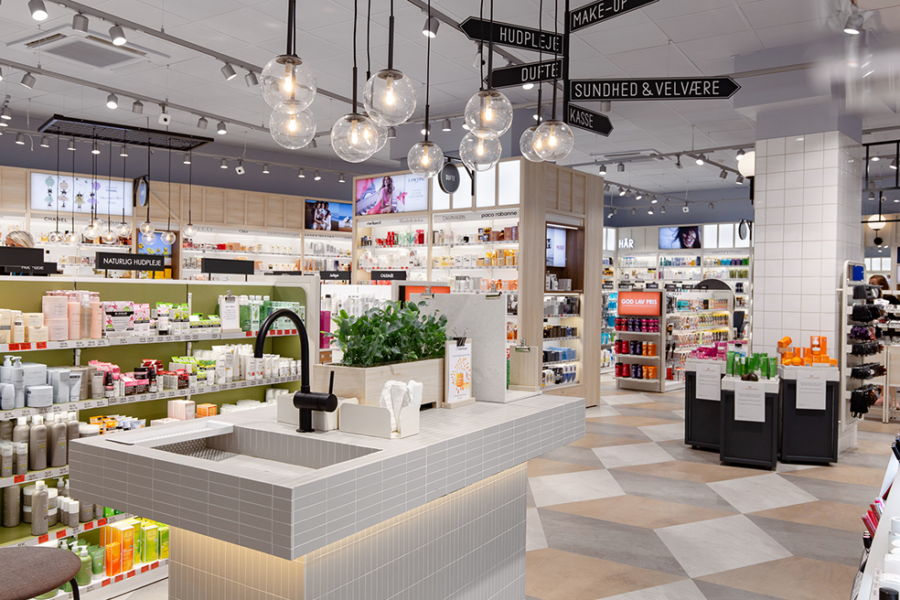
The expert: Here’s how to rethink retail in 2024
Oscar Hafvenstein, co-founder of design and concept agency Boys Don’t Cry and co-founder and CEO of Co-X, a platform for so-called co-retail, described as a sharing economy model for commercial places, shares his best tips to stand out – also in challenging times.
The most important thing to think about for physical retail, according to Hafvenstein, obviously highly depends on who and where you are in the landscape. However, in general, after managing survival in a harsh market, there are three key topics for 2024.
– First, think ‘back to basics’ and get the fundamentals right again after years and years of watering down service and assortment. We have gone from over-stocked stores and warehouses during Covid to under-stocked and under-staffed stores. Making consumers happy again is the best way to survive. Organic growth from a service-oriented bottom-up approach is fundamental in 2024.
– Secondly, see and innovate for the mistreated mid-to-upper-market consumers who want retail to be aspirational, seamless, personal, and rich. The consumers need retail to improve a lot on service, assortment, information, transparency and presentation. Retail should be a place of great service for the many – consumers want offline retail to be as good as online retail. And vice versa, consumers want online to be as good as offline, in terms of service and trust and being personal. An improvement here could steal back consumers from the online marketplaces, which are winning globally, and make them happier with what and how they buy from brands and retailers.
– Lastly, to afford to improve, I think 2024 is the time to start thinking about business model innovation. The direct-to-consumer model is facing a lot of challenges, it is getting more and more expensive to win consumers online and own stores are very expensive to run. Wholesale has been fundamentally broken for years, especially for retailers.
Retail in 2024 is trapped in internal competition between brands and retailers that makes no one happy and kills multi-brands. Channel conflicts due to the widespread adoption of DTC for brands, and the retailers’ focus on private labels and profitability are making retail lose its fundamental role as a distribution channel for brands. Thinking about how retail can become a great distribution service for brands is my big thing to think about in 2024.
How important is physical retail for brands now?
– In the ‘new normal’, it is as important as ever, or even slightly more so. The majority of consumers would shop locally, if they could. If what they need is not available, they are forced to go online, and online is a very chaotic and large place, so it is easy for the consumer to get lost and lose track of their actual need. So the most important thing is to become seamless over the online/offline divide. It’s key to create a physical presence as cost-efficiently as possible, and keep it connected to its own online channels, so that the consumers can start and end their shopping journeys where and when they want. This demands that we think outside of legacy retail business models and roles and find new ways of collaborating through the ecosystem.
What innovations do you see in retail now?
– The industry is huge and the are many attempts. There is some maturity in certain topics that have been traditionally slow and hard. The promise of RFID and RFID-based self-service checkouts are nice, mobile to mobile payments are coming. Technological solutions are always pushing onwards, says Hafvenstein, continuing,
– We are innovating ourselves on how to apply online technology and thinking to the world of retail. It is hard to get it right and create real change, even for giants like Amazon or Macy’s. Retail is so full of inertia, so any attempts at great innovation probably need to be very holistic and even audacious to make a change.
You’ve been a part of the retail landscape for quite long. How have you seen it change over the years? And, looking ahead, what do you forecast for physical retail?
– There was a golden age of concept innovations from the late 90s to up and around around the financial crisis in 2008. Everybody dreamt big and global and retail was fun and exciting. After 2010 and the advent of mobile and the clear e-com era, retail tried for a while more to invent, integrate omni, and rise to the challenge, but I think it was too hard when all investments flowed into pure play e-com. We met a lot of companies where the leadership still wanted to improve the physical experiences, but many boards said no, ‘win online first, then you might go for stores’. After years and years of losing ground to e-com and a lot of fruitless trials and errors in omni innovation, the ambitions went low and there is a feeling of bad confidence. When post-Covid traffic grew again, it was not the innovative people standing ready, but the laggards, that said, ‘we were always right, online was a fad’. I am over-exaggerating a little but you get the point.
– With the bounce-back after Covid, it is clear that physical retail is appreciated by consumers, but the concepts are watered down, mistreated, and under-invested in and consumers want it to be better. And there are many consumer worlds, born online, that are under-explored. Physical retail is full of holes to be filled by new entrepreneurship. Connected and collaborative concepts that appeal to modern consumer mindsets and needs. Imagine all the kinds of concepts that are missing or could replace the incumbents’ old and dusty concepts, a good denim marketplace, exciting sports concepts in all kinds of verticals – home improvements, gardening, the list goes on…
Through Co-X, Hafvenstein explains, that the goal is to push for an online way of thinking for offline-online marketplaces, creating the platform for platforms.
– Brands should be better off being the ones responsible for their goods and products, all the way to the hand of the consumer, and retail should become a service-oriented shared distribution platform. Everybody could win in such an environment by doing what they do best, sharing the risks and rewards and engaging and serving the consumer across the online/offline divide, he concludes.




